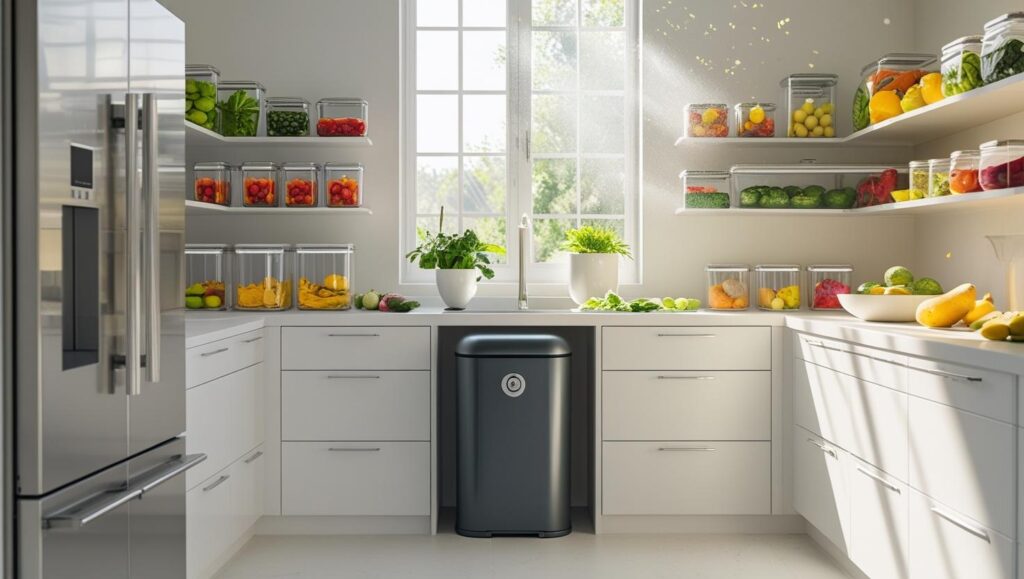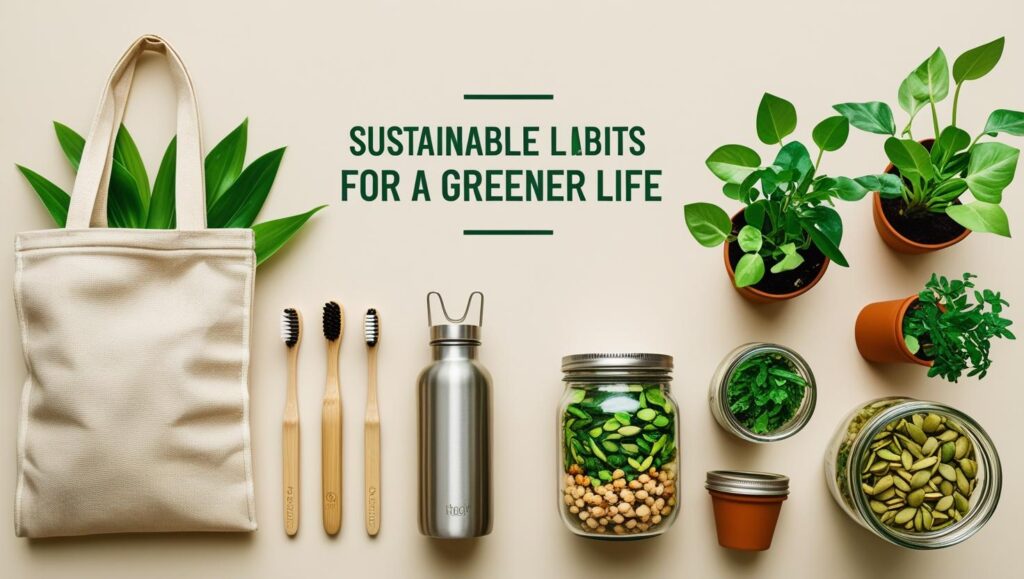Sustainable living is more than a buzzword—it’s a movement, a mindset, and a lifestyle. As the world becomes more aware of the environmental impact of our choices, individuals are taking action in small but powerful ways. The goal? Reduce our carbon footprint, conserve resources, and build a future where we can thrive—without damaging the planet.
Whether you’re just starting your sustainability journey or looking to level up your green habits, this guide offers 9 actionable ways to live more sustainably—without sacrificing comfort or convenience.
1. Switch to Reusable Over Disposable

One of the easiest ways to live more sustainably is to reduce single-use items. Plastic bags, water bottles, coffee cups, and straws add up quickly.
What to do:
- Carry a reusable water bottle.
- Bring your own grocery bags.
- Use metal or bamboo straws.
- Keep a travel mug for coffee runs.
Impact: Millions of disposable items are saved from landfills and oceans annually by switching to reusables.
2. Buy Less, Choose Better
Fast fashion and impulse buying may feel good in the moment, but they cost the planet dearly in resources, waste, and pollution. Sustainable living means buying mindfully, choosing quality over quantity, and thinking long-term about the impact of each purchase.
What to do:
- Shop second-hand or thrift.
- Invest in quality over quantity.
- Support ethical brands.
Impact: Reducing demand for mass production cuts down on energy use, pollution, and waste.
3. Embrace Plant-Based Eating (Even Part-Time)
Animal agriculture is a leading contributor to greenhouse gas emissions, deforestation, and water usage. A plant-based diet—even just a few days a week—can make a difference by lowering your carbon footprint, conserving natural resources, and supporting a more ethical and sustainable food system.
What to do:
- Try Meatless Mondays.
- Incorporate more fruits, vegetables, and legumes.
- Reduce dairy when possible.
Impact: Shifting your plate helps reduce deforestation, water usage, and emissions.
Harvard School of Public Health explains how plant-based diets are healthier for people and the planet.
4. Reduce Food Waste at Home

The average household wastes around 30% of the food it buys. That’s wasted money, resources, and energy that could feed others, reduce landfill overflow, and significantly cut down on harmful greenhouse gas emissions from decomposing waste.
What to do:
- Meal plan to avoid overbuying.
- Store food properly.
- Compost food scraps.
Impact: Cutting food waste lowers methane emissions and saves valuable resources.
Tracking your food waste habits through micro-journaling can create lasting behavior change and bring awareness to your daily consumption.
5. Go Digital When You Can
Paper production contributes to deforestation, water pollution, and high energy use. Going paperless is a simple switch with big benefits—saving trees, reducing waste, conserving water, and lowering your environmental footprint in everyday tasks like note-taking, billing, and document storage.
What to do:
- Switch to e-bills and digital receipts.
- Use apps instead of paper planners.
- Avoid printing unless necessary.
Impact: Reducing paper use helps conserve forests and minimize water waste.
6. Make Energy-Saving Home Adjustments

Your home is a powerful place to practice sustainable living. Small changes can lower your energy bill and carbon footprint.
What to do:
- Use LED light bulbs.
- Unplug devices when not in use.
- Adjust your thermostat.
- Use energy-efficient appliances.
Impact: Less energy means fewer fossil fuels burned and less CO₂ in the atmosphere.
7. Drive Less, Move More
Transportation is a top contributor to emissions. By walking, biking, or carpooling, you’re making a direct impact.
What to do:
- Walk or cycle for short trips.
- Use public transport.
- Plan errands to reduce unnecessary trips.
Impact: Reduces your personal carbon emissions and promotes a healthier lifestyle.
8. Support Local and Seasonal Products
Local produce and goods have a smaller environmental footprint due to reduced transportation and packaging.
What to do:
- Shop at farmers’ markets.
- Buy seasonal fruits and vegetables.
- Choose locally made goods.
Impact: Strengthens your local economy and reduces fossil fuel consumption.
9. Educate Yourself and Others
Sustainable living isn’t just about actions—it’s about awareness. The more you learn and share, the more powerful your impact becomes.
What to do:
- Read blogs, books, or watch documentaries on sustainability.
- Talk to friends and family about eco-friendly habits.
- Follow environmental groups on social media.
Impact: Informed communities create collective action for a better future.
Final Thoughts

Sustainable living doesn’t require perfection. It’s about progress—small, intentional choices that add up to big results over time. By adopting even a few of these habits, you’re contributing to a healthier planet and a more conscious lifestyle.
Remember, you don’t have to do everything at once. Pick one or two habits to start with, and build from there. Over time, sustainable choices will feel as natural as your morning routine.
If you’re ready to start your journey or deepen your commitment to sustainability, bookmark this post and share it with others. The earth—and future generations—will thank you.
